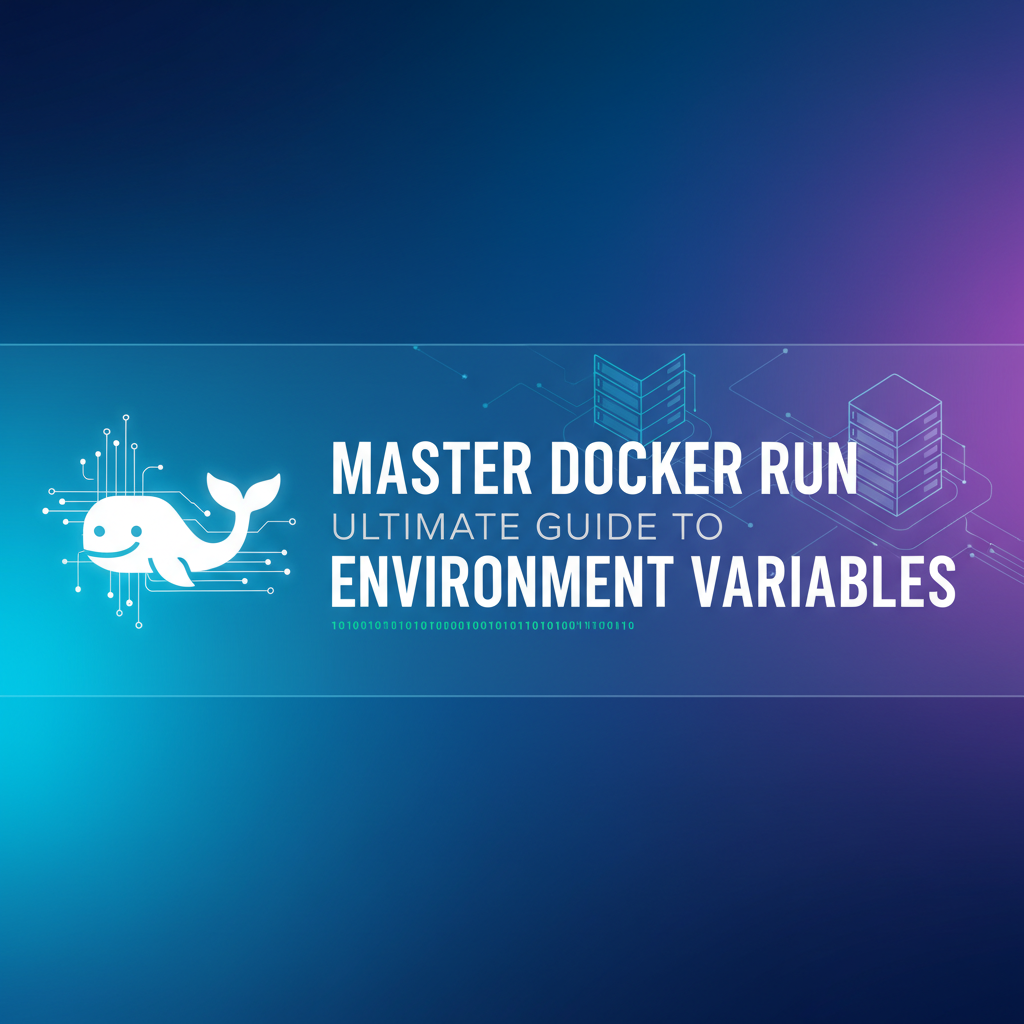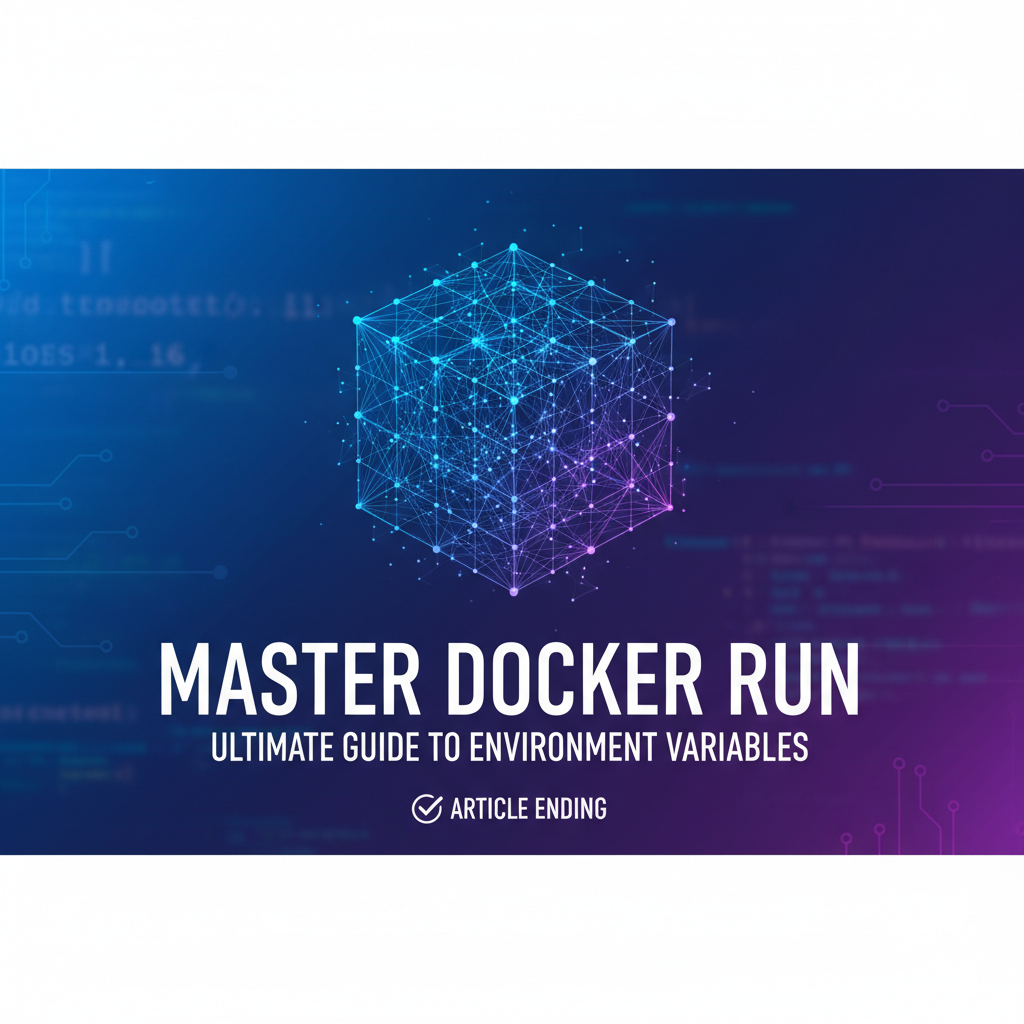Master Docker Run - Ultimate Guide to Environment Variables

Introduction
Docker has become a cornerstone in the world of containerization, enabling developers to create, deploy, and run applications efficiently across various environments. One of the essential aspects of Docker is the use of environment variables. These variables provide a way to configure applications without the need to modify the codebase or package configurations. This guide will delve deep into understanding and utilizing environment variables with Docker, providing you with the knowledge to master Docker Run with environment variables.
Understanding Environment Variables
What Are Environment Variables?
Environment variables are key-value pairs that are set by the operating system or the user and can be accessed by processes running on the system. In Docker, environment variables are used to pass configuration data to the containers at runtime. They are a convenient way to handle configuration settings that are environment-specific.
Types of Environment Variables
There are two main types of environment variables in Docker:
- User-defined Environment Variables: These are variables that you explicitly define when you run a container. They are often used for passing sensitive information such as passwords, API keys, or configuration settings.
- Predefined Environment Variables: These variables are provided by Docker and are commonly used to configure various aspects of the container runtime.
Setting Environment Variables
Using Dockerfile
One of the most common ways to set environment variables in Docker is by using a Dockerfile. This is a text file that specifies instructions to build an image.
FROM alpine
ENV APP_ENV development
ENV APP_VERSION 1.0.0
RUN echo "Hello, $APP_ENV environment!" > /usr/share/nginx/html/index.html
CMD ["nginx", "-g", "daemon off;"]
In this example, APP_ENV and APP_VERSION are user-defined environment variables set at the image level.
Using docker run
You can also set environment variables directly when you run a container using the docker run command:
docker run -e APP_ENV=production -e APP_VERSION=1.1.0 nginx
In this case, APP_ENV and APP_VERSION are passed to the container at runtime.
Managing Environment Variables
Combining Environment Variables from Multiple Sources
Docker allows you to combine environment variables from multiple sources. The following command combines both user-defined and predefined environment variables:
docker run -e APP_ENV=production --env DOCKER_ENV=custom nginx
Default Values
You can provide default values for environment variables that are not explicitly set at runtime:
docker run --env APP_ENV=development:default nginx
In this example, if APP_ENV is not set, Docker will use the default value of development.
APIPark is a high-performance AI gateway that allows you to securely access the most comprehensive LLM APIs globally on the APIPark platform, including OpenAI, Anthropic, Mistral, Llama2, Google Gemini, and more.Try APIPark now! 👇👇👇
Advanced Usage of Environment Variables
Using Secrets
For sensitive data, Docker provides the --secrets flag, which allows you to securely manage sensitive information.
docker run --secret id=mysecret nginx
Docker will automatically expose the secret as an environment variable named mysecret.
Environment File
Docker supports loading environment variables from a file using the -e or --env-file flag.
docker run -e FILE=/etc/environment nginx
The FILE variable will be read and its contents will be added to the environment variables.
Common Use Cases for Environment Variables
Database Configuration
Environment variables are commonly used to configure database connections in Dockerized applications.
ENV DATABASE_URL="mysql://user:password@db:3306/mydatabase"
API Keys
Handling API keys securely is a common challenge in containerized environments. Environment variables provide a solution:
docker run -e API_KEY=abc123 myapiapp
Logging Levels
Application logging levels can also be set using environment variables:
docker run -e LOG_LEVEL=info myloggingapp
Conclusion
Understanding and utilizing environment variables is crucial for running Docker containers effectively. By mastering Docker Run with environment variables, you can create highly configurable and flexible containers that are ready to be deployed in various environments. Remember to use Docker's advanced features like secrets and environment files for handling sensitive information and to combine variables from multiple sources to create the most effective container configurations.
APIPark and Docker
Integrating your applications with Docker can significantly improve deployment and scaling. APIPark, an open-source AI gateway and API management platform, can be integrated with your Dockerized applications to enhance their functionality. By using APIPark, you can easily manage and secure your APIs, providing a seamless integration experience with Docker containers.
| Feature | Description |
|---|---|
| Integration with AI Models | APIPark allows for quick integration of 100+ AI models with your Docker containers, enabling advanced features like sentiment analysis and translation. |
| Unified API Format | APIPark ensures that your application interacts with AI models through a standardized API format, simplifying maintenance and integration with Docker containers. |
| API Lifecycle Management | Manage the entire lifecycle of your APIs within Docker containers, from design to decommissioning, with APIPark's comprehensive API management features. |
For more information on how APIPark can help you manage your Dockerized applications, visit the APIPark official website.
FAQ
Q1: Can I use environment variables with all Docker containers? A1: Yes, you can use environment variables with all Docker containers, whether you're running them directly with docker run or deploying them from a Dockerfile.
Q2: Are there any risks associated with using environment variables? A2: Yes, there are risks. If you're using environment variables for sensitive information, like API keys or passwords, they should be kept secure. Using Docker secrets or environment files can help mitigate these risks.
Q3: Can I modify the value of an environment variable after a container starts? A3: No, you cannot modify the value of an environment variable for a running container directly. You would need to stop the container, modify the environment variable, and then restart the container.
Q4: What are predefined environment variables? A4: Predefined environment variables are variables provided by Docker and are commonly used to configure various aspects of the container runtime, such as HOSTNAME, HOME, or PATH.
Q5: How can I set default values for environment variables? A5: You can set default values for environment variables using the :default syntax in your Dockerfile or when using the --env flag with docker run. For example, ENV APP_ENV=development:default sets a default value of development for APP_ENV if it's not explicitly provided.
🚀You can securely and efficiently call the OpenAI API on APIPark in just two steps:
Step 1: Deploy the APIPark AI gateway in 5 minutes.
APIPark is developed based on Golang, offering strong product performance and low development and maintenance costs. You can deploy APIPark with a single command line.
curl -sSO https://download.apipark.com/install/quick-start.sh; bash quick-start.sh

In my experience, you can see the successful deployment interface within 5 to 10 minutes. Then, you can log in to APIPark using your account.

Step 2: Call the OpenAI API.



